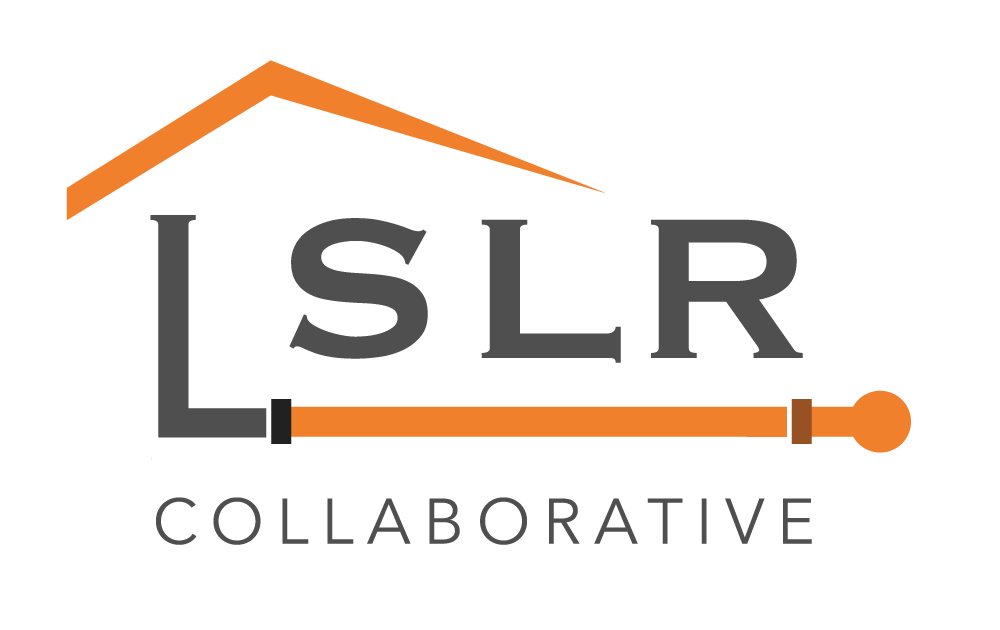|
Water Online
Pete Antoniewicz A white paper recently released by the Association of State Drinking Water Administrators (ASDWA) provides insights on how water utilities can better use data to manage uncertainty around remaining lead-service-line (LSL) customer connections. The document, Principles of Data Science for Lead Service Line Inventories and Replacement Programs, represents the organization’s commitment to making information accessible to assist state program administrators in protecting public health. It was developed for ASDWA by BlueConduit, a water-infrastructure analytics consulting company. Read the full article. CNT
See the full blog. From inventories to public education, here's how local leaders can take action on lead An estimated 6 million leaded service lines(link is external) deliver drinking water to households across the United States, and when these lines leach lead into drinking water, it poses a serious public health problem. In the midst of the COVID-19 pandemic, states and cities are working to issue moratoriums on water shutoffs and reconnect service to those that have been shut off—but it’s important to recognize that running water doesn’t necessarily mean clean water. The Center for Neighborhood Technology (CNT) and Metropolitan Planning Council(link is external) (MPC) teamed up to apply lead service line inventory and planning practices in two suburbs south of Chicago—Flossmoor and Hazel Crest—to better understand the challenges and opportunities. Here are some steps any community can take. Over the past several years, in large part prompted by the public health crisis in Flint, MI, caused by lead in drinking water, states and communities have been outlining policies and practices to get the lead out of drinking water supplies. While the focus in this current moment is to ensure that our communities come out on the other side of COVID-19 as unscathed as possible, there is a huge opportunity to ensure that stimulus and recovery dollars are invested in improving how systems work for people, including making infrastructure safer for renters and owners. Water Online
Pete Antoniewicz Any drinking water or wastewater treatment operation can be challenged by the demands of changing seasonal conditions or regulatory requirements. That is particularly true for operators who are forced to wear multiple hats at small- to medium-size utilities. Here are scores of links to informative and practical resources for operators associated with those utilities and for the municipalities and utility managers they serve. Even consulting engineers can use these links to inform customers and help them identify funding resources to move ahead with critical infrastructure projects. See the full article. Momentum builds across US to replace lead water pipes: Water contamination an issue for millions7/1/2019
Read the full article.
The Nation's Health Wisconsin resident Tory Lowe got bad news following a medical exam of his 4-year-old son. Lowe’s family lives in a low-income neighborhood in North Milwaukee. Many homes have lead pipes that can contaminate drinking water. As a precaution, the family drinks only bottled water and has a filter on the kitchen tap. But despite those steps, in 2017 doctors told Lowe that his son, Troy, had high levels of lead in his blood. “I couldn’t believe it,” Lowe told The Nation’s Health. “We don’t have lead paint.” It turned out that Troy had been drinking from the bathroom sink. Though lead paint, dust and soil are the biggest risks for high blood lead levels in children, lead in water can have dangerous consequences as well. While the U.S. has some of the world’s safest public water supplies, in some cases, up to 20% of a person’s exposure to lead can come from tap water, according to the U.S. Environmental Protection Agency. Any level of lead in blood is unsafe in children, but the health risk multiplies when levels surpass 5 micrograms per deciliter, according to the Centers for Disease Control and Prevention. In Troy Lowe’s case, his measurement was 6 micrograms per deciliter. An estimated 4 million U.S. households have children who are exposed to high levels of lead. Lead exposure can cause fatigue, joint ache, constipation and memory loss, and is particularly dangerous for infants and children. Developmental problems involving learning, behavior, speech and hearing can result. When blood lead levels reach 45 micrograms per deciliter, CDC recommends that medical treatment be considered. Lead water pipes threaten public health. Partial replacements could make it worse.|Opinion5/17/2019
Read the full opinion article on North Jersey.com
The crisis in Flint, Mich., made clear the health impacts of lead in drinking water, especially for infants, young children, and fetuses. Now water tests have found lead contamination in homes and schools across New Jersey. While the 1991 federal Lead and Copper Rule, which relies primarily on adjusting water chemistry to minimize the leaching of lead from old pipes into water, works most – but not all – of the time, it has failed to eliminate the biggest underlying source of lead in water: lead service lines. These pipes, made of lead, deliver water to residences and smaller commercial buildings from the main under the street and serve as “lead straws.” There are an estimated 350,000 lead service lines in New Jersey, and until they are replaced, the problem of lead in water will not be resolved. The Herald News
See the original article. Joliet will kick off a program to replace water service lines made of lead at a community meeting Tuesday night. The program provides no-interest loans for residents who want to replace service lines made out of lead, which still are found at older homes in the city. Joliet has banned lead service lines since the late 1930s. To prevent contamination, Joliet adds a blended phosphate to city water that coats lead pipes and protects the water from lead corrosion. Utilities Director Allison Swisher will make a presentation on the lead service replacement program at a meeting of the East Side Neighborhood Association at 6:30 p.m. in the Nowell Park Recreation Center. The city is starting on the East Side because of the numbers of homes in older neighborhoods built before the 1940s, Swisher said. Public Health Newswire APHA Annual Meetings News See the original article online. Drinking water contamination was the focus of a Tuesday morning Annual Meeting session, where panelists from Lead Service Line Replacement Collaborative addressed the health risks of lead service lines that connect buildings to water mains under the street. Lead can enter drinking water when pipes and plumbing fixtures corrode. Young children, infants and fetuses are especially vulnerable to the pollutant, a neurotoxin that can impact all organ systems and contribute to cognitive impairment, behavioral problems and lowered IQ. Moderating the “Drinking Water and Lead Service Lines: Partnering to Protect Public Health” session was Nsedu Obot Witherspoon, executive director of the Children’s Environmental Health Network, who told attendees: “We have to reduce the exposure to lead in drinking water, and that begins with replacing the nation’s lead service lines — 6 to 10 million of them bringing water to taps across the U.S. It’s a tall order, but it has to be done to protect the health of our children.” Water Online
See the original article It has been 32 years since the amended Safe Drinking Water Act (SDWA) banned the installation of lead pipes in water systems nationwide. Unfortunately, that decision has not yet translated into action for every lead service line (LSL) installed before that point. Fortunately, someone has done a lot of legwork toward getting a handle on that process. Here is a preview of the help they have to offer. Identifying The Scope Of The Problem As much as has been learned about the effects of lead in drinking water as a result of the Flint, MI water crisis, progress toward eliminating the causes has been slow — in part relating to delays in the U.S. EPA finalizing long-term revisions to the Lead and Copper Rule (LCR). Complying with the requirements of the LCR, however, is just a first step toward dealing with the problem. This executive report on the contribution of service lines and plumbing fixtures to lead and copper compliance issues concludes: “Corrosion control treatment is likely still the best and most cost-effective way to comply with the requirements of the LCR. However, the consumer’s portion of the lead service line, which is beyond the jurisdiction of local water utilities, remains an important unresolved source of lead. The most effective way to reduce the total mass of lead measured at the tap is to replace the entire lead service line, followed by replacement of lead sources in the premise piping, the faucet, and then the meter.” Public Health Newswire
See the original article This guest post by Surili Patel, deputy director of APHA’s Center for Public Health Policy, discusses an exciting APHA 2018 panel on creating public health partnerships to advance lead service line replacement. According to the Centers for Disease Control and Prevention, exposure to lead in the environment can contribute to cognitive impairment, behavioral problems and lowered IQ in children and cause other health effects in adults. Lead can be found in dust, air, soil and drinking water in and around our homes, schools and child care facilities. And while there is no safe level of lead exposure, lead poisoning is preventable. In honor of National Lead Poisoning Prevention Week, we are talking about one way in which children and families are exposed to lead: drinking water. Lead can enter drinking water when pipes and plumbing fixtures that contain lead corrode. While Congress banned the use of lead pipes in 1986, lead service lines still connect the plumbing of over 6-10 million homes to water mains under the street. Association of State Drinking Water Administrators
The Lead Service Line Replacement Collaborative has just announced a series of webinars for 2018 to cover topics crucial to building and implementing successful lead service line replacement programs. The first webinar is April 25 and provides information about the Collaborative's Web Toolkit. See more details and registration information below: Registration: https://lslrc-whatyouneedtoknow.eventbrite.com Read the full blog. |
Have a suggestion for an article or blog to add?
Let us know! Type
All
Date
April 2023
|


 RSS Feed
RSS Feed